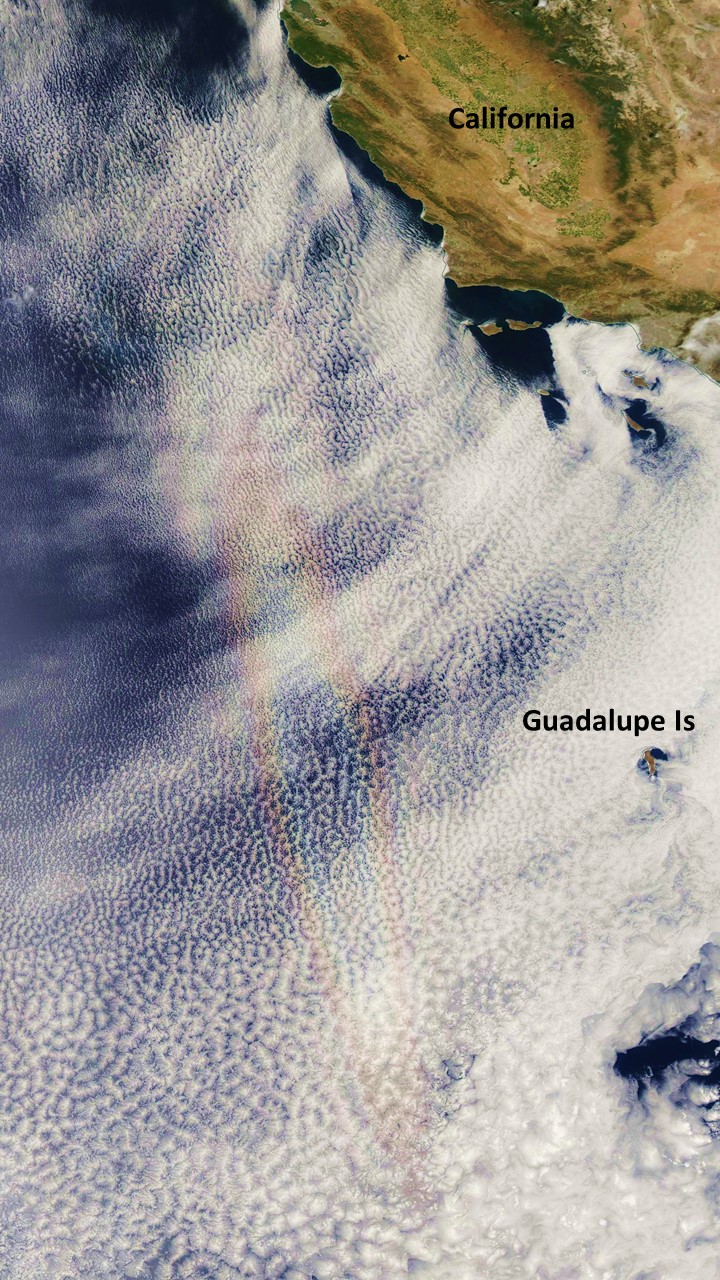Anyone who has traveled on airplanes a lot has probably seen the glory (or halo) phenomenon when looking at the shadow of the airplane on the cloud deck below. A rainbow-colored circle can sometimes been seen.
But the same kind of phenomenon can sometimes be seen in color satellite imagery….but it requires the right conditions. The following image was taken yesterday, south of California (click image for full size).
When the sun reaches it’s northernmost extent in late June, it is almost directly over the marine stratocumulus cloud deck that often exists southwest of California. As the NASA color imagers on the Aqua and Terra satellites pass over, they are looking straight down. In the imaginary “satellite shadow” region below, under the right conditions, the glory phenomenon can be seen, but only a few time each year.Due to the latitude of Mexico’s Guadalupe Island, and the persistent marine stratocumulus layer there, I’ve found this to be the best place to see the event. The reason the glory is elongated is that the satellite imager doesn’t actually take a 2-D photo, but scans directly under the satellite path below, basically building up an image with a bunch of narrow scans. Repeated image slices through the circular glory builds up an elongated glory.
Pretty cool.

 Home/Blog
Home/Blog




